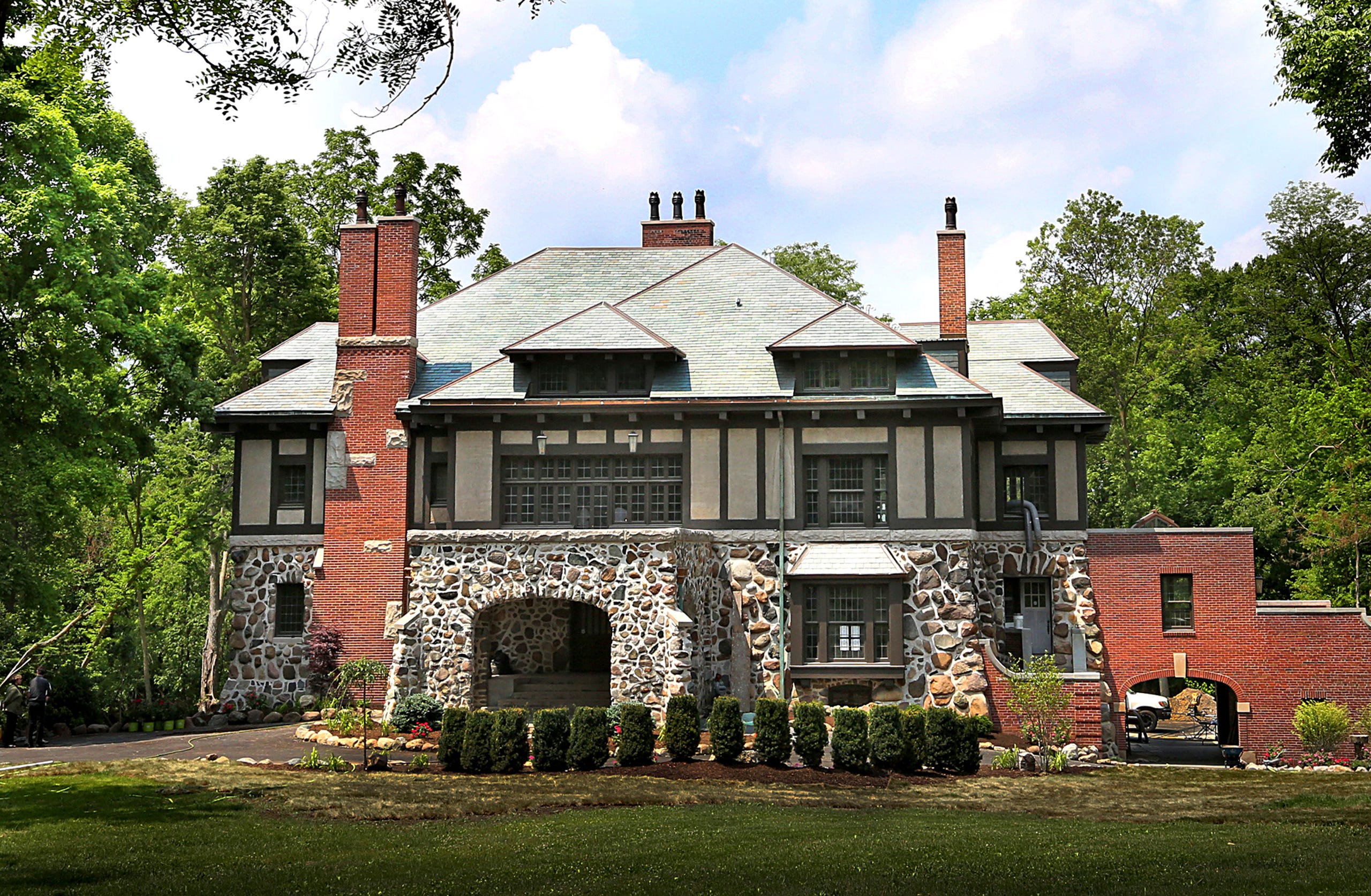The historic neighborhood of Golden Hill is bounded by the , Woodstock Club, Bertha Ross Park, and 36th Street. It is a quiet enclave of varied, distinctive, and beautiful architecture; winding narrow village-like roads; greenspaces, and forested ravines providing a parklike setting.

The area was mostly farmland until wealthy and nationally prominent industrialist acquired properties from 1900-1907 to create his 100-acre “Golden Hill” estate. That estate encompassed what is now the neighborhood known by the same name. Mr. Parry was the founder of the Parry Manufacturing Company in Indianapolis, once touted as the largest wagon and buggy company in the world.
Just before Parry’s death in 1915, the family subdivided the estate into the neighborhood. The first homes were built in 1916 with most of the houses built in the 1920s and 1930s by wealthy prominent families. Some of the original Golden Hill residents said that the new neighborhood was the most prestigious place to live in Indianapolis. Three Parry structures, original to the estate are extant—the original farmhouse (1898), the Parry mansion (1904), and the Gate Lodge (1905). Until mid-century, few Golden Hill homes were offered for public sale and were passed privately among family members and friends.
George MacDougall served as the landscape architect for the Parry Estate and later planned the Golden Hill subdivision. He was also involved with the planning of other area estates including those for , , Walter Marmon, Albert Cole, and Hugh McK. Landon (the future site of the Indianapolis Museum of Art at ).
MacDougall was originally from Scotland and his Scottish Craftsman influence, with its distinctive boulder and fieldstone work, is still evident throughout the neighborhood. The Parry mansion and grounds, the Gate Lodge, the south entrance wall, the stone bridge, and the fieldstone and concrete staircase leading down to the Spring Hollow springhead are representative examples.

Leading Indianapolis and regional architects and their firms designed houses in Golden Hill. Among them were Fredrick Wallick, , , , Osler and Thompson, , and Mothershead and . The architecture is quite diverse, and many are of period revival styles including Tudor Revival, Colonial Revival, French Eclectic, Neo-Classical, and Italian Renaissance.
Many well-known and influential individuals in addition to David Parry have lived in Golden Hill, including his son , a well-known Indianapolis personality, writer, playwright, and actor who was a founder of the Little Theatre Society of Indiana, later known as . He died during World I, a decorated aviator. Other significant Golden Hill residents are , Herbert Woolen, , Mayor , , , William Atkins (E. C. Atkins Company), William Ball, , , Turner Woodard, Congressman Andre Carson, Chief Justice Randy Shepard, and news anchor Debbie Knox.
An authentic 1860s Alaskan totem pole once stood in Golden Hill. Alaska Governor John Brady brought it to the 1904 St. Louis World’s Fair as part of a group of poles for display at the Alaska Pavilion. After the Fair’s conclusion, it was given to David Parry as a gift. Parry raised the totem on his estate where it stood until it was destroyed in a storm in 1939. It is recognized as the missing pole of the Brady collection at Sitka National Historical Park. It is celebrated in Golden Hill by a small monument and state historical marker along Totem Lane. A recreation of the 30-foot pole now stands at the in Indianapolis.
Consisting of 54 homes, the district was added to the National Register of Historic Places in 1991. With a neighborhood association formed in 1934, Golden Hill has always maintained a strong, cohesive community spirit. This lovely area has attracted residents with increasing diversity; all have been enchanted with what they consider a very special place.

Is this your community?
Do you have photos or stories?
Contribute to this page by emailing us your suggestions.